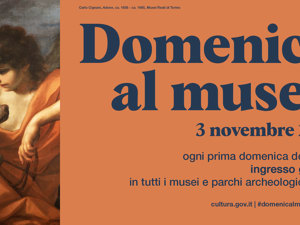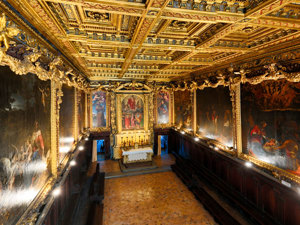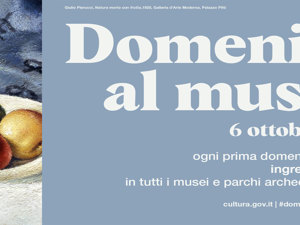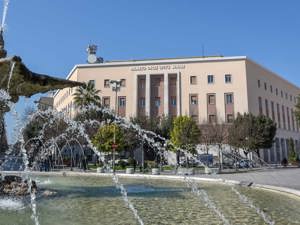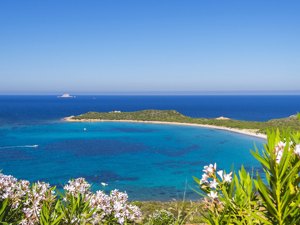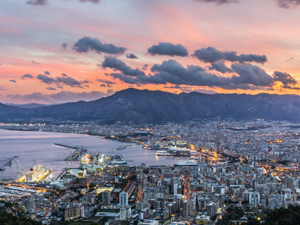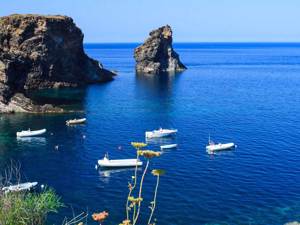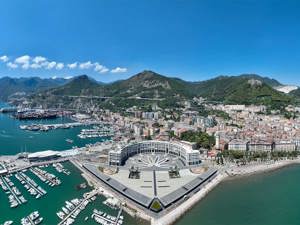The pearl of Magna Grecia
We are flying towards a wonderful corner of Calabria lapped by the clear blue waters of the Ionian Sea, a land of harmonious hills and immense expanses of green vegetation. Crotone, the pearl of Magna Grecia, a place of beautiful landscapes and coastline, has a rich cultural heritage.

Column of the temple of the goddess Hera Lacinia Copyright © Sisterscom.com / Shutterstock
With its blend of ancient and modern, Crotone reveals its ancient splendours through a striking cultural tourism itinerary. Suffice it to say that this age-old city was chosen by the mathematician Pythagoras of Samos (around 532 B.C.) as the ideal learning centre for the many studies and activities inspired by his genius. Crotone, known for its proverbial hospitality, is also a land of ancient flavours, sun and sea.
From the promontory of Capo Colonna, located in the south of the city, a continual series of breath-taking views accompany our gaze. On the Crotone section of the Ionian coast, the Protected Marine Park of Capo Rizzuto has been called the world’s largest open-air aquarium. It is an area of extraordinary unspoilt beauty, where shapes and colours make the scenery equally attractive, with exquisite panoramas of abundant vegetation and the rare marine lily. But the genuine heritage of this area is the sea depths, a refuge for a wide variety of marine species.

Sanctuary of the Black Virgin of Capo Colonna Copyright © Sisterscom.com / Shutterstock
Capo Rizzuto
Capo Rizzuto is a good starting point for going in discovery of the area’s natural beauties and ancient historical and cultural sights.
From here it is easy to get to Capo Colonna with its ruins of a Greek Temple. We recommend visiting the small church in the same area, from where each year a propitiatory procession leaves carrying a stature of the Black Virgin of Capo Colonna to the sea.
From here it is easy to get to Capo Colonna with its ruins of a Greek Temple. We recommend visiting the small church in the same area, from where each year a propitiatory procession leaves carrying a stature of the Black Virgin of Capo Colonna to the sea.
The Greek-Roman Museum instead displays treasures found in the sea, including coins, boats, goatskins and fabrics. Beneath the sea of Capo Colonna, red corals move with the waves. Beyond the coast lie vines cultivated in the sand and small bushes of sweet-smelling white broom.
The Archaeological Park of Capo Colonna comprises the sacred area of the promontory, where the majestic Doric Temple with its rectangular plan stands. Dedicated to the god Hera Lacinia, the protector of women, pastures and fertility, only one of the forty-eight columns of the temple remain.
The splendid promenade is a section of Via Cristoforo Colombo and was completed in 2002. It immediately became the centre of nightlife of Crotone, particularly in the summer. After 8 p.m., it becomes a pedestrian area closed to traffic. It is easy to get to the small tourist port from here.
The fortress of Capo Rizzuto
In Le Castella in the municipality of Isola Capo Rizzuto, approximately 30 km from Crotone, the Aragonese fortress of Le Castella is all that remains of a vast fortified area. Situated on a small peninsula over the sea, the fortress has undergone various architectural changes over the centuries.
Important monumental quarries dating back the Greek period (VI-III century BC) in Punta Cannone and port area were presumably used to mine blocks for the columns of the Temple of Hera Lacinia, situated on the promontory of Capo Colonna.

Aragonese fortress of Le Castella Copyright © Sisterscom.com / Shutterstock
Calabrese cuisine
Calabria is a land with a very ancient food heritage, and the region’s dishes are rich in flavours and aromas that reflect the variety and abundance of the local produce.
Strictly handmade pasta, fabulous sausages prepared following ancient recipes, fruit and vegetable jams, are the testimony of traditions handed down over time. The local products offer fish from the coasts, tasty cheeses, fine DOC and IGT wines, meat from local farms without forgetting the excellences recognized all over the world such as the sweet and tasty Tropea onions, Rossano liquorice, the fragrant and rare bergamot, and the caciocavallo silano.
Strictly handmade pasta, fabulous sausages prepared following ancient recipes, fruit and vegetable jams, are the testimony of traditions handed down over time. The local products offer fish from the coasts, tasty cheeses, fine DOC and IGT wines, meat from local farms without forgetting the excellences recognized all over the world such as the sweet and tasty Tropea onions, Rossano liquorice, the fragrant and rare bergamot, and the caciocavallo silano.
Text by Lisa Maria River
Avion Tourism Magazine
Photos: Copyright © Sisterscom.com, Shutterstock
Photos: Copyright © Sisterscom.com, Shutterstock
Copyright © Sisterscom.com
Video: www.turiscalabria.it
Tourism Boards
calabriastraordinaria.it
Partnership with Booking.com
Where to sleep in Crotone

Copyright © Sisterscom.com / Shutterstock
Crotone is a welcoming city and offers different possibilities for accommodation.
To find the ideal hotel and the best offers you can do a search for the stars but also for landmarks.
WHERE TO GO in crotone
Monuments in Crotone
THE CITY WALLS
In 1541, the viceroy Don Pedro De Toledo ordered the fortification of the city by building the medieval walls. The remains of the Greek city and parts of ruined houses were used for its construction. The new city walls, with polygonal shape, consisted of five ramparts and three gates, including one secret gate. In 1867, the municipal authorities decided to knock down one of the three gates and part of the wall to form the porticoes and a panoramic road to the sea, the current Viale Regina Margherita.
CHARLES V CASTLE FORTRESS
This powerful bastioned fortress with polygonal plan is one of the most important and solid military contructions in southern Italy. It is unique, being the only example of the castle sitting not on a hill, but around a hill, which it encloses in the same way as a Greek acropolis. Over the course of the years its shape has been changed and partly demolished, causing it to lose its strategic military importance.
CROTONE CATHEDRAL
Located in the centre of the city of Crotone, the cathedral was built in the IX century, then restored in the sixteenth and eighteenth centuries, particularly on the outside. The interiors are elegant and decorative, but the most unique features are the baptismal font with zoomorphic base, a choir made entirely of wood, an eighteenth-century organ and a painting of the Madonna of Capocolonna or Black Madonna to which the city is devoted.
NOBLE PALACES
These are found alongside the walls: Palazzo Olivieri Susanna (1526) in Vico Montalcini; Palazzo Sculco in via Ducarne with delightful arched balconies; Palazzo Barracco situated in Piazza Castello, now the headquarters of Confcommercio; Palazzo Berlingieri in Neoclassical style in Piazza Umberto I, dating back to 1880; Palazzo Albani in the square of the same name dedicated to Eugenio Albani, mayor of the city for many years; Palazzo Giunti in Via Fosso; and Palazzo Maljda in Via Suriano.
Museums in Crotone
NATIONAL ARCHAEOLOGICAL MUSEUM
The National Archaeological Museum of Crotone is one of the best equipped in Calabria due to the abundance of the items exhibited and their intrinsic historical and artistic value. Arranged over two floors with a garden at the entrance, the museum displays finds in chronological order from prehistorical times onwards. Of interest is also the section dedicated to the Sanctuary of Hera in Capo Colonna with votive artifacts and Roman Age sculpture of Eros and Psyche, found under Capo Colonna sea.
ARCHAEOLOGICAL SITE OF CAPO COLONNA
Ten miles to the south of Crotone, on the promontory of Capocolonna, lies the Archaeological Park, which covers some 30,000 m2 of land. It is one of the most sacred areas of the entire Mediterranean basin, and features the ancient remains of a large Greek sanctuary dedicated to the godess Hera Lancinia. At the entrance, there is an Archaeological Museum consisting of three pavilions set in the ground to reduce their environmental impact. Today, only one column with stylobate in Doric style, 8.5 m high with 20 flat grooves, and a base of 10 levels of square blocks, survive of the majestic temple.
Excursions & Tours in Crotone and surroundings
PAPANICE
This outlying district of Crotone is home to the Chiesa della Pietà, a church housing a nineteenth-century canvas depicting the Madonna della Pietà, which was restored in 2007. Another important church is the Chiesa di San Pietro e Paolo (Church of St. Peter and Paul), which houses a sixteenth-century baptismal font and a seventeenth-century wooden crucifix, as well as a painting known as “La Gloria di San Pantaleone” (The Glory of St. Panthaleon), the work of local artist Gisella Arrigo.
MARINE RESERVE AND AQUARIUM
The Capo Rizzuto Marine Park occupies an area of 15,000 hectares of sea and is the largest in Italy. It extends from the coast to the south of Crotone for 36 km, between Capo Donato and Barco Vercillo, and to a depth of 100 metres towards the open sea. The Aquarium, located in Capo Rizzuto, in Piazza del Santuario della Madonna Greca, consists of 22 tanks that hold a total of 20,000 litres of water. Flora and flora from the protected area are exhibited and the bottom of the sea can also be admired on board a boat with transparent hull.
Partnership with GetYourGuide
Recommended tours in Crotone and surroundings

Matera, Basilicata. Copyright © Sisterscom.com / Shutterstock
MATERA and SASSI
Walking tour in Matera, a UNESCO site and 2019 European Capital of Culture. The tour start in Piazza Vittorio Veneto to admire: the charming landascape of the Sassi (the ancient neighborhood of Sasso Barisano and Sasso Caveoso), the cave houses, the churches carved in the rock, the Cathedral, which is built in a hill and from here you can enjoy views over the historic center of Matera and of Murgia Materana Park. Tour with local and licensed tour guide. Duration: 2 hours. Guided walking tour of the Sassi and Matera.

Tropea, Vibo Valentia, Calabria. Copyright © Sisterscom.com / Shutterstock
CAPO VATICANO and TROPEA
An half-day tour to discover Capo Vaticano, the most beautiful lookout point on the Tyrrhenian Coast, and taste specialties of Calabria such as the Nduja, a sausage made with pepperoncino, fine pasta with olives and herbs with fresh bread, olive oil, and a glass of wine. The tour end in the coastal town of Tropea on the cliffs, with old alleyways and historical buildings. The tour includes: transport in air-conditioned travel bus or minibus and multi-lingual expert tour guide. Duration: 5 hours. Tour of Tropea and Capo Vaticano.
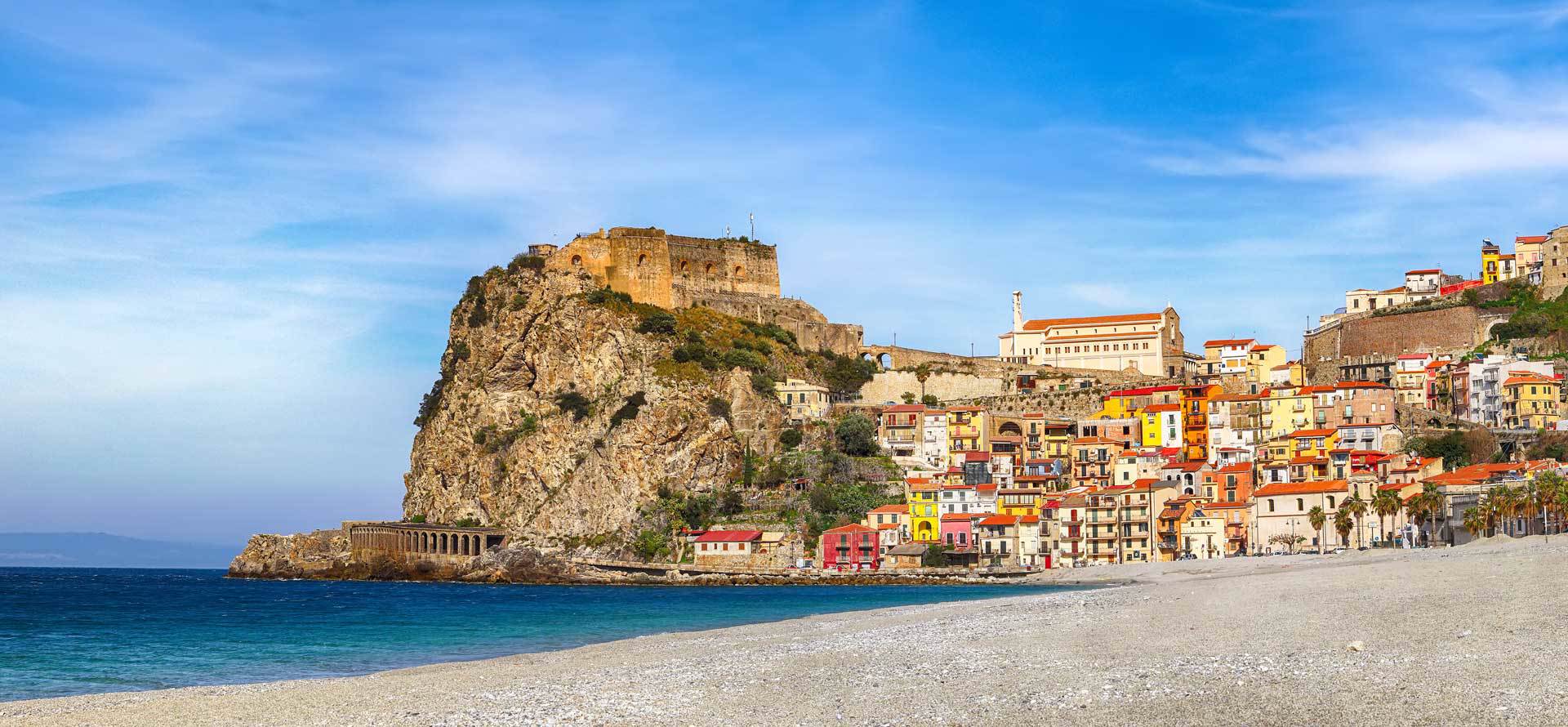
Scilla, Castello Ruffo, Calabria. Copyright © Sisterscom.com / Shutterstock
REGGIO CALABRIA and SCILLA
Full-day tour from Tropea to explore the beautiful Coast of the Gods in Calabria and visit: Reggio Calabria, the National Museum with two famous Riace bronzes, Corso Garibaldi for the shopping, the characteristic fishing village of Scilla and the fishing village of Chianalea with its castle. The tour includes: transport by air-conditioned coach or minibus and multilingual tour guide. Duration: 1 day. Tour of Scilla and Reggio Calabria.
All Tours and excursions
News & Useful info
You might be interested in
Other destinations
Airports nearby Crotone



